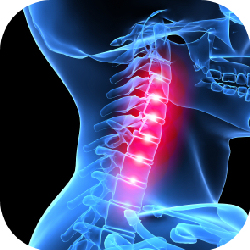Raise your hand if you ever have had whiplash? Have you ever had a CHIROPRACTOR treat it? Listen up! 
The adult human head weighs about 5kg, which, at rest, is comfortably supported by the bones and muscles of the neck. However, rapid movement backward and forward puts a much larger load on the cervical vertebrae and ligaments holding them in place. The anterior longitudinal ligament that runs down the back of the spine is particularly at risk of stretching or tearing during a rapid collision.
The signs and symptoms of whiplash associated disorders range from mild neck pain for a few days after the injury to headaches, arm pain and long-term restricted movement of the neck. Studies have shown that whiplash injuries can also constrict blood flow to the brain, leading to light-headedness, poor concentration and fatigue. As a Chiropractor and a chiropractic office in Chicago we treat these symptoms every single day with our patients.
Since 1995, the Québec Task Force (QTF) scale has been widely used to assess the severity of WAD and how they should be treated. Their grading system is as follows:
Grade Classification
0 – No complaint about the neck. No physical signs
I – Neck complaint of pain, stiffness or tenderness only. No physical signs
II – Neck complaint and musculoskeletal signs. Musculoskeletal signs include decreased range of motion and point tenderness
III – Neck complaint and neurological signs. Neurological signs include decreased or absent deep tendon reflexes, weakness and sensory deficits
IV – Neck complaint and fracture or dislocation
In addition to grading the injury based on your symptoms, a chiropractor can assess the injury by performing a thorough examination, palpating the affected area and observing your neck movement and any associated pain.
The recommended chiropractic treatment will depend on the severity of the injury, but common actions include treatment with heat and cold, chiropractic manipulation and a specific program of exercises to gently regain the full range of neck movement. A bag of frozen peas held against the neck for short periods is a good stop-gap treatment for moderate neck pain if you have to wait for an appointment. Pain medication may be required in grade II injuries and above (usually NSAIDs to reduce inflammation but narcotic pain relief may be prescribed for grade III WAD) and collars may also be used to keep the neck in place for 72 hours after grade II and III injuries to give the muscles and ligaments time to recover.
Grade IV whiplash is a serious injury and your chiropractor can refer you to a specialist for treatment. This will at minimum consist of several months of neck immobilization and possibly surgery. Most whiplash injuries are, much less serious than this and are more likely to be a cause of pain and discomfort than a true medical emergency. Though, as anyone who has suffered with WAD will tell you, the distress associated with ongoing neck pain and stiffness can have a substantial impact on daily life, and it is well worth getting checked over by a chiropractor if you experience any signs of whiplash in order to reduce your healing time and reduce the chance of future neck complaints. Book your appointment today with Chicago Chiropractic as we take same day appointments and want to make sure your whiplash condition doesn’t get worse.
